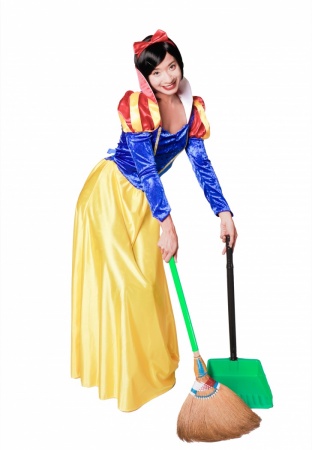
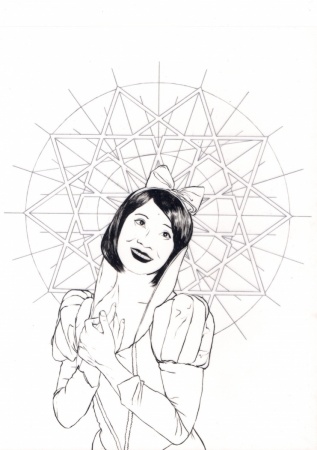
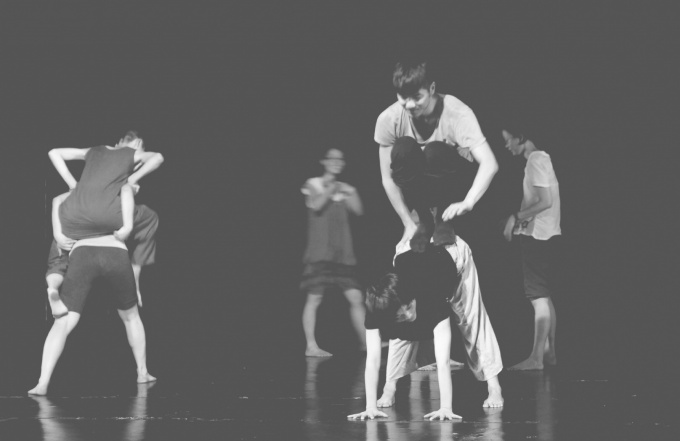
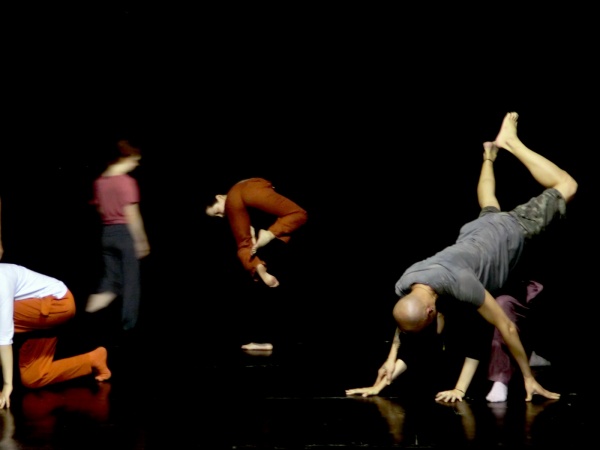
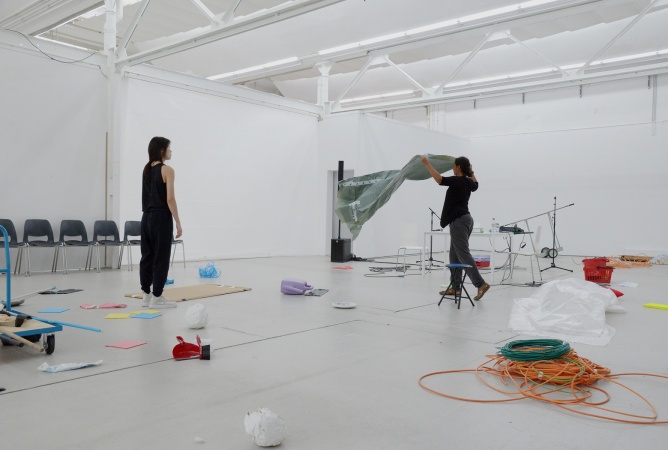
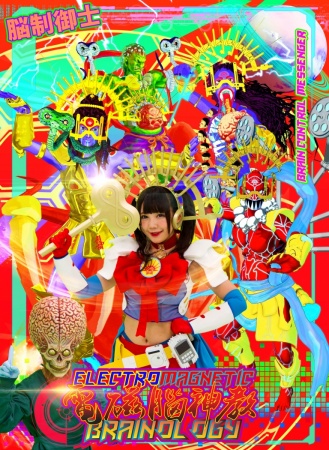
Arthub Favorite: Week 119
RAM HIGHLIGHT 2018: Is It My Body?
Duration: 2018 Sep 29 – Oct 4
Venue: Rockbund Art Museum (20 Huqiu Road, Huangpu District, Shanghai)
Artist: Eisa Jocson, Nunu Kong, Lu Yang, Venuri Perera, Geumhyung Jeong
Curator: Hsieh Feng-Rong
About the Exhibition
Following from the successes of the first edition in 2016, “Zhang Ding: Devouring Time”, and the 2017 edition, “Displace”, RAM Shanghai will continue to challenge the boundaries of conventional exhibitions and invite the public to participate and interact with the works. Visitors will be able to enter a multi-dimensional art space blending exhibition, concert, performances, workshops, lectures, and other experiences together. “Is It My Body?” is curated by senior curator Hsieh Feng-Rong, who invites four artists or collectives from diverse fields that encompass drawing, painting, performance, video and real-time motion-capture technology. The focus is on how visuality dominates our living habits and modes of thought, therefore transforming the means by which humans perceive their own bodies and this transforms relationships between people.
For Hsieh Feng-Rong, “We are situated in an age where consumer culture is highly developed, our lives are filled with all manners of social spectacles constructed by various symbols. The popularization of smartphones, in particular, has accelerated and stimulated modes of thought to become centered on visuality; the cognition and imagination of the body has been weakened as a consequence. This project, through the artists’ practices, does not seek to fundamentally change people’s existing views of the body. It hopes to raise people’s awareness of the above-mentioned phenomenon. Furthermore, this project, with artistic practices as ways of cultural researches, attempts to open up new understandings of the body and how new concepts of the self might emerge along with these new horizons.”
Are people ever more reliant on visuality in capturing information and thereby neglecting other faculties? However, the interaction between body and its environment always brings into play the manifold senses, which synthesizes together with the subjective body in order to generate perceptual experiences. “Is It My Body?” attempts to shift towards the body’s other perceptual systems, reflecting on questions regarding however different levels of the body and probing an array of issues relating to the body and subjectivity. This includes among others: identity politics, the standardization of bodies under cultural economic influences, dysfunctional bodies, the consumerization of the body, the relationship of body and space, neurology, subculture and the tension between being controlled or controlling the body.
There are four works featured in the exhibition. Eisa Jocson transforms into Snow White and interprets Princess Studies with her partners. In 2005, the Hong Kong Disneyland opened with large numbers of performers from the Philippines employed to repeat formatted performances of “happiness” as their daily labor. However, they are often excluded from the main roles and instead assigned to supporting roles. The artist’s performance subverts this accepted convention, interpreting Snow White with her non-white body and deconstructing this classic body icon. Nunu Kong has organized three experimental performance workshops, which she will personally lead and demonstrate to participants movements related to the issue of the “body”. For instance, in Multi-Dysfunction, the constraints and limits of the participant’s body is used to emphasize intuition; or with the work Extraction, where a special high-intensity cardiovascular training is arranged in order to extract perspiration from exercise in an exploration of whether the “consumption” of energy is lost or regained. Condition and Coordination meanwhile delves into the relationship between people and space, creating an “bodily narrative” of the individual. Electromagnetic Brainology! Brain Control Messenger! by Lu Yang draws on neurology, turning the relationship between body and the spiritual world into works integrating animation, otaku culture, game aesthetics—which the artist derives from divergent interpretations of the “body” from various cultures and religions. This time, the research team from Osaka University (“Galvanic Vestibular Stimulation”) quoted in the work is also invited to be present as a workshop in this exhibition. The public will have the chance to experience the odd sensation of controlling one’s bodily movement with a remote control. Venuri Perera and Geumhyung Jeong are adept at performing by using elusive and subtle relationships. The work Venuri n Geumhyung establishes a simple set of game rules, each time they carry out this rule, they continually interchange between moments where they either trust or doubt one another, and roles where the level of power also shifts constantly.
Introduction and Agenda
Eisa Jocson
Princess Studies, 2018
Princess Studies is an excerpt from HAPPYLAND Part I: Princess (2017) that exposes Filipino labor and performance of happiness within the fantasy production of the ‘happiness’ empire. In Hong Kong Disneyland Park, dancers from the Philippines are hired in large numbers as professional backup dancers to the main western characters. Princess is a performance wherein two Filipino performers hijack and cannibalize the white-skinned princess, the archetype model that dominates the narrative imagination of children, while excluding their context, bodies and histories.
Princess Studies unpacks how two Filipino artists meticulously distilled and reconstructed the body language of this fantasy princess, and programmed her mobility and speech into their own camouflaged bodies. The video documentations of rehearsal and first drafts of Filipino Snow Whites further reveal modes of independent artistic production.
Coloring White further hijacks the 2-dimensional origins of Snow White by corrupting coloring books with drawings of Jocson as Snow White.
The Filipino Snow White complicates the narratives of both fictive (Snow White) and real (Filipino) bodies, while reinforcing domestic and affective labor performed by both.
Performance:
Sep 29, 2018, 15:00, 4th Floor at RAM
Sep 30, 2018, 20:00, 4th Floor at RAM
Performance: Eisa Jocson, Joshua Serafin
Production & Technical Management: Yap Seok Hui | ARTFACTORY
Philippine Macho Academy, 2014
Philippine Macho Academy is a fictive structure or institution that serves as a classroom where the principles of macho dancing in the Philippines are fleshed out and conveyed.
This work is a documentation of Jocson’s research and articulation of macho dance movement vocabulary. It comprises artifacts, texts, drawings and video documentation. It is a course on the physical principles of macho dancing based on a syllabus designed through a woman artist’s macho dance practice. Central in this project is the affective labor of man performed in the woman’s body. The latter undergoes physical change and social habit, ultimately complicating the notions of the feminine and the macho.
All this is fleshed out in the body and its movement. The artist makes ample reference to it in the form of drawing and performance, as well as the ethnographic details of her research and collaboration with practitioners. She also notates it in the modernist method of rendering turns of the body graphic, and so reflecting on erotic desire and the devices of modernity. This is her articulation of a striptease: a laying bare of the gendered body that finally becomes queer.
Texts by Patrick Flores for Philippine Macho Academy in Vargas Museum (2014).
Edited by Rockbund Art Museum.
Exhibition: Sep 29 – Oct 4, 2018, 14:00 – 18:00, 5th Floor at RAM
Nunu Kong
Multi-dysfunction, 2018
Keywords: regional propulsion (constraining and reviving somatic functions), partial body functions
Multi-dysfunction focuses on movements of specific body parts along with the deployment of physical functions, while other parts and functions of our bodies are kept still and disabled, so as to get a better understanding of the function of each body part. This workshop is designed to explore the guiding role and plasticity of the nervous system, or the sixth sense, aiming to influence the brain function (or thinking) by changing biological conditions.
Workshop:
Oct 1, 2018, 14:00, duration: 2 – 3 hours, 4th Floor at RAM
Extraction, 2018
Key words: (active) perspiration, cardiopulmonary exercise, sweat collection
Extraction aims to collect body water, or sweat, and thus involves several measures, especially active exercises, to promote perspiration. To ensure successful extraction and collection of large amounts of sweat, participants will have to complete the intensive cardiopulmonary exercise as instructed by the artist.
Workshop:
Oct 2, 2018, 14:00, duration: 2 hours, 4th Floor at RAM
Condition and Coordination, 2018
Key words: reverse movement (exercise based on reverse thinking), multitasking, focus diversion, narration with body
Condition and Coordination requires the review and control of the body through reverse thinking, challenging the habitual thinking and instincts of participants. To help establish the collaboration between one’s self and one’s awareness, participants will have to complete an additional task while retaining the main focus, so that some of their focuses are redistributed to improve body coordination during the movement.
The workshop commences with oneself, then evolves to include others, specific circumstances and the public domain.
Workshop:
Oct 2, 2018, 14:00, duration: 4 hours (max.), 4th Floor and outdoor space at RAM
Lu Yang
Electromagnetic Brainology! Brain Control Messenger!, 2017
With an interest in comprehending the human bodies through brain science, Lu Yang applied the concepts of Deep Brain Stimulation (DBS) and Transcranial Magnetic Stimulation (TMS) technologies in her previous artworks. In 2018, she created the video work Electromagnetic Brainology! Brain Control Messenger!using the Galvanic Vestibular Stimulation (GVS) technology jointly developed by NTT DOCOMO, a mobile phone operator in Japan, and Osaka University. The term “Brain Control Messenger” originates from a Japanese expression that alludes to an individual who is capable of manipulating the brain, which is deemed as theomnipotent force within a body.
The artist created a towering girl warrior coined as Brain Control Messenger. She strives to defend all conscious beings with weapons made with modern medical technologies, such as the DBS crown, the TMS magic wands, and a state-of-the-art remote-controlled weapon designed with the GVS technology, which enables people to control their walking directions via remotes.
The controversial Japanese music idol, Chanmomo from the group Band Ja Naimon, starred in the music video, whom Lu learned from a documentary produced by NHK and made contact courtesy of the Japan-based cultural center, Spiral. The video features patented technologies, a music idol, pop music produced by Invisible Manners, and artistic direction by Japan’s renown pop music video director, Satoru Ohno.
Exhibition: Sep 29 – Oct 4, 2018, 14:00 – 16:00, 2nd Floor at RAM
“Smart RikuRiku” Returns to the TOP! Dance Battle, 2018
“Smart RikuRiku” Returns to the TOP! Dance Battle is a mini concert based on Lu Yang’s recent creation that combines dancing, real-time motion capture technology, music and visual arts incorporating various elements from pop culture, Otaku culture and “Smart” culture, stimulating a vibrant, holistic visual-aural-body experience!!
Performance:
Oct 1, 2018, 17:00, featuring: Brain Control Messenger, 2nd Floor at RAM
Oct 2, 2018, 21:00, featuring: The Four Deities of Elements – Earth, Water, Fire and Air, 2nd Floor at RAM
Oct 4, 2018, 21:00, featuring: Smart RikuRiku, 2nd Floor at RAM
Venuri Perera and Geumhyung Jeong
Venuri n Geumhyung, 2017
Objects have power, objects are waste, and objects create territories. Venuri and Geumhyung – what is going on between them? There is a weight – air of control. There is an allusion – but not sure what to. Should we try to play this game, too?
Venuri Perera and Geumhyung Jeong play the game that they built together. They are addicted to their game, playing it again and again. Following the simple rules of the game, Venuri and Geumhyung constantly communicate with each other, sometimes trusting and sometimes doubting their feelings. The rules of the game are strict but also fragile. As they repeat the rule, the roles keep switching and the power keeps shifting. The game never stops.
Performance:
Sep 29, 2018, 16:00, 3rd Floor at RAM
Oct 1, 2018, 15:00, 3rd Floor at RAM
About RAM HIGHLIGHT
RAM HIGHLIGHT is RAM annual celebration which has a strong focus on the creativity and experience in contemporary art by a dinner and special commissioned project for 8-15 days. The artist(s) will be selected according to their abilities to activate creative experiences related to their own art creation as well as their wish to shaken the space and the audience of the Museum. RAM offers the commissioned artist(s) an opportunity to conceive a powerful art statement in relation to the space and audiences of RAM.